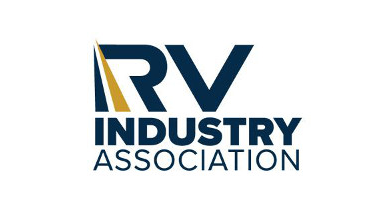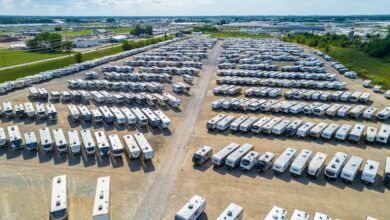What Is Your Dealership Worth?
Understand the different value components that determine a dealership's worth at time of sale.

Whenever a dealer is interested in selling his or her business, the most frequently asked question is, “What is my business worth?”
The sale of a dealership is comprised of numerous value components, each having varying methods for determining their values. Fixed assets may be sold at net book value, negotiated value or at appraisal. Parts and accessories factor obsolescence. New vehicles might be subject to curtailment. Used vehicles consider age and condition. But the crux of the value calculation is determining the goodwill portion of the business – also referred to as “Blue Sky.” This is the intangible value of the business, in addition to the hard assets, that is not as easily quantifiable. It requires industry expertise, a deep understanding of financial benchmarks, a steady finger on the ever-changing market pulse and an intimate knowledge of buyers and their current buying parameters. It is as much an art as it is a science.
Adjusted Earnings
In the small business environment, and especially in the dealership industries that we service (automotive, RV, marine, powersports, trucking and equipment), the leading method is the Earnings Value Approach, where the value lies in the dealership’s ability to produce future income and cash flow. The most common method is the Capitalization of Earnings, which predicts the expected cash flow based on past earnings, adjusted for any unusual income or expenses, and multiplies it by a capitalization factor. This capitalization factor is similar to an industry-familiar concept referred to as the “multiple of earnings.” The adjustments to earnings are an attempt to reflect the true profitability of the business. Additionally, we often find that dealers, as sole proprietors, expense through the operation non-business-related items.
Acceptable adjustments in the RV industry include:
- Owner’s Salary: Providing the dealership has an active general manager. However, any excess owner’s salary (above market rate for a general manager) could be added back.
- Excess Family Salaries: Consider your family members’ roles in the day-to-day operations and their salaries compared to the market rate for a similar hire.
- Management Fees: If the dealership is part of a larger organization, the dealership may pay a fee to a management company for centralized services. However, a portion of this fee might be required to replace essential functions, so, only the excess should be considered.
- Travel & Entertainment: Providing it is discretionary and not required in the ordinary course of business. However, trips to Las Vegas for the RV Dealers Association Convention/Expo or 20 Group meetings are a necessary dealership expense.
- Contributions: Consider if the nature of the contribution generates business, such as supporting local businesses, charitable events, schools and sporting sponsorships.
- Other Interest: Since flooring is an essential part of the business, only interest other than flooring can be considered an adjustment.
- Fair-Market-Value Rent: Since real estate must generate a reasonable return on asset, rent should be adjusted to reflect the fair-market-value. If you intend to lease the property for an amount different than your current occupancy rate, then the delta must be factored.
- One-Time Expenses: An equipment purchase or service expansion that was expensed as opposed to capitalized, a lawsuit settlement, excessive employee bonuses during the pandemic.
- Depreciation & Amortization: Illustrates cash flow and is consistent with the generally accepted principle of EBITDA (earnings before interest, tax, depreciation, amortization).
- LIFO Reserve: The delta of the accumulated LIFO Reserve from one year to the next.
- Discretionary Expenses: Any other expenses not required to operate the business.
Conversely, One-Time Income, such as PPP money and government grants, employee retention tax credits, or the gain on a sale of an asset, should be deducted from the earnings.
The Intangibles
Once the adjusted earnings of a business have been calculated, a host of tangible and intangible variables are considered:
- The history, quality and reputation
- The financial health and condition
- The historical earnings, future projections and uncaptured potential
- Brand strength, popularity, desirability and support from the OEM
- The Dealer Assigned Territory, market size, demographics and the competition
- The availability to purchase the real property, its acreage, facility size, number of service bays, required remodeling, the purchase price and anticipated rent expense
- The outlook of global and U.S. economies, and the RV industry in particular
In an artistic fashion, combining the adjusted earnings with the intangibles would yield a multiple of earnings to determine the dealership’s goodwill value. However, it is important to recognize that to an extent, the intangibles are already reflected in the adjusted earnings. Consider how sales volume would be impacted by market size, how gross profit would be impacted by competition, or how earnings would be impacted by rent expense. The greater importance of these intangibles is the value they represent to a prospective purchaser. Since buyers have varying criteria as to what makes for an ideal acquisition candidate, each buyer will naturally place a different value on the same business.
Further, buyers have their own systems and processes, company culture, expense structure, etc. Therefore, it is our strong opinion that the goodwill value cannot be determined solely by track record and applying a multiple. Instead, it must be a combination of the historical adjusted earnings, the earnings of a buyer’s pro forma, and the buyer’s desired return on investment. Buyers will use the adjusted earnings and evaluate the income and expense structure to establish a baseline for their projections, and back themselves into an offer that satisfies their buying criteria, including their threshold for return on investment. If you’re reading between the lines – the value of your business is ultimately determined by the buyer.
Sellers must use caution when applying multiples to their earnings as the concept is not as straightforward as most believe.
- How are the earnings calculated?
- How many years are evaluated?
- What weight is applied to each year?
- What multiple is applied to the earnings?
- Which assets are included in the multiple?
Considering the basic principles of supply and demand, premier opportunities and highly desired brands command a premium as they are less available for acquisition. Smaller operations and widespread brands might command a lesser multiple as they could be viewed as more available, especially in the current buy-sell market. The higher and more stable the earnings, the less risk associated with the investment. This assurance could yield a higher multiple as it gives the buyer greater confidence in maintaining the performance.
Despite this article’s focus on earnings and the connection to value, as a broker, our objective is to find the unique buyer who accomplishes our client’s business and personal goals, which at times includes much more than the sale price. It is important to also consider the character and quality of the buyer who will be taking care of your team, your customers and your life’s work. One who will negotiate in good faith, maintain confidentiality, and be an all-around pleasure to work with. Not all buyers cross the finish line. There is monetary value in transacting with one who will.



